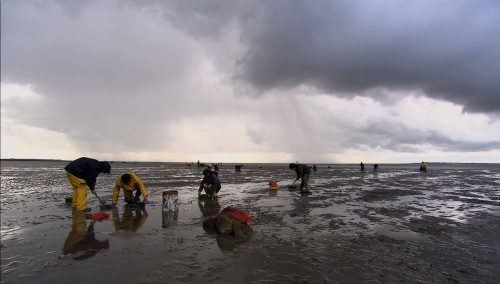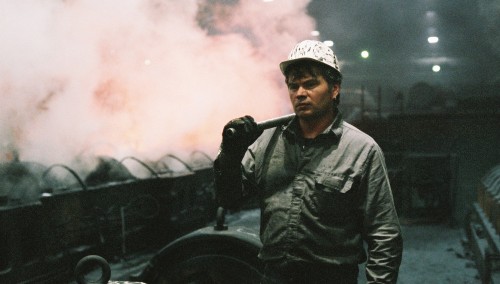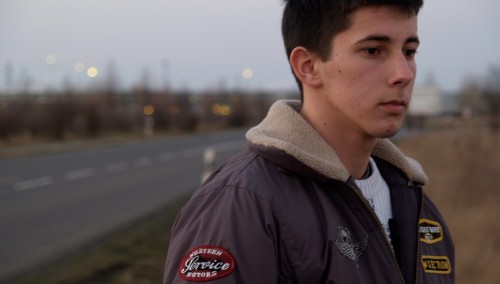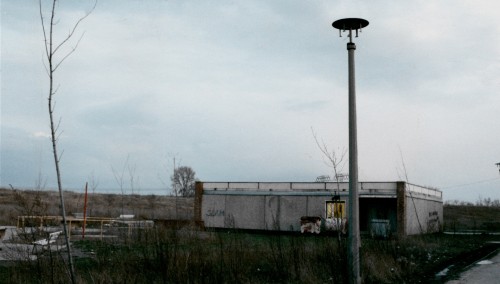Working Worlds 2008
It is not a coincidence, but entirely indicative of the programme that this fifth edition of “Working Worlds” includes two feature films. Succinctly, one could say that work has become not only “invisible”, “intangible”, abstract – premises and assertions that we have pursued in past years with documentary films. Instead it seems that (physical) labour, its position as the moment of creating identity, as a force shaping society, has migrated from the register of the present into the field of myth. A shift is taking place from the recording function of the documentary film to the narrative of the feature film. Tragedy elevates “bare life” to a fateful narrative, transforms what is individual into what is general, and what is random and marginal into something exemplary, an occurrence into history: this is how human beings live.
It is characteristic of film as socially engaged art that it deals with the outskirts of society, marginalised ways of living, in order to speak of dominant circumstances. The philosopher of history Jacques Rancière has called these dominant conditions the idea of the “power of collective fate”: “The idea of time directed to a certain completion, time that makes a promise to those who hold to its sequence and the tasks associated with it; and conversely becomes a threat to those who disregard the conditions it poses and neglect the tasks linked to them or seek to anticipate their effects.”
Working Worlds #5: The Power of Fate presents contemporary examples – as well as a “flashback” to the 1990s – of conventionally “invisible” conceptions of life oscillating between fateful development and resistance. Normally, for example, one only reads about the protagonists of Nick Broomfield’s Ghosts in the feature section of newspapers: “21 Illegal Chinese Workers Drowned in Accident.” What Broomfield does is to turn a news article, statistics, an abstract number, into a life; what is unusual for a filmmaker who as the “inventor” of investigative documentarism influenced Michael Moore, for example, is that he chooses the form of a TV drama. Ghosts, produced by the British Channel 4, starts with the accident: a group of Chinese day labourers, secretly gathering cockles at night, is trapped by the incoming tide; a mobile phone call takes us back into the past, in which the story of the main figure Ai Quin develops as a tragedy. As an involuntary nomad in search of a foundation for survival, she enters the EU illegally, working as a labour slave in the British food industry for a people-smuggling organisation. The same as the film comes around in a circle to the beginning (and is then able to surprise us with a crucial turn!), the role of all the actors in the drama is determined: the shadow economy of modern slave labour (that helps to finance our European standard of living) does not know a way up and ends in the allegorical image of the tide coming in as a force of nature and indifferently, ultimately devouring even the middle man and accomplices to the smugglers. Situated in between docu-drama, feature film and video realism, what is impressive about Broomfield’s film is the way he bluntly takes a position and constantly questions the categories: the main roles are all played by laypersons, former illegal migrants, and similarities with real events – in this case the notorious “Morecambe Bay Disaster” – are intended.
Karger, a feature film by German director Elke Hauck, is similarly allegorical while at the same time adhering to naturalism. The protagonist of the film, Karger (first name is irrelevant), is a worker in a steel mill in Saxony. The plant is being “restructured”, just like his family life – the divorce from his wife Sabine is finalised at the start of the film, but Karger, who later loses his job, still goes in and out of their shared flat. With Hauck’s unobtrusive directing and in the interplay among her amateur actors (all from the region), what sounds like material for a melodrama becomes a ballad of looks, impressions, a story of an attitude of life that swims with the current of events and yet takes an almost obstinate stance towards the predominant ideology of constant re-invention. Karger is a projection surface, a film screen, from which the expectations and projections of the present are rebounded and reflected. Is he a “hero”, as it says in the opening musical quotation of David Bowie, sand in the gears, or a ball in the hands of fate? The film leaves the answer open.
At Crossing Europe this year, we have an opportunity to present work by the German filmmaker Thomas Heise for the second time. Heise’s films shatter categories and preconceived views; they take a position for conceptions of life in a post-communist (and post-industrial) East Germany and dare to combine political engagement and filmic historiography with uncompromising, aesthetic complexity. STAU – jetzt geht’s lo s (1992) is one of the milestones of German documentary film; the fact that shortly after German reunification a film watched and listened to six young people spouting right-wing slogans instead of “condemning” them in a kind of reflex, was perceived in some places as a scandal. In retrospect STAU is not only a monument to political marginal zones, but also to worlds of work and life, whose relationship to the “new Germany”, lacking any functioning, prescribed conceptions, is simultaneously complicit and chaotically resistive.
In Kinder. Wie die Zeit vergeht, his most recent film, Heise returns to Saxony-Anhalt for the third time following STAU and Neustadt (Stau – der Stand der Dinge) (1999/2000). His view of the people has remained sober and questioning. What has become of earlier ideas and plans is recorded by the camera, the way children, for example, become fixed in roles that they once tried out only as a diffuse rebellion against the status quo. Heise shoots in black and white, which gives his films a cold beauty that repels any false empathy. The figures are suspended in their surroundings, they have a grip on the predominant conditions, they often keep silent. Jeannette, the heroine in Neustadt has made a dream come true and become a bus driver. The film travels with her for the duration of a long scene, partaking of this new reality. Kinder. Wie die Zeit vergeht is composed entirely of these kinds of segments of reality, between which there are still gaps remaining. These are gaps that stimulate thinking. Continuity is an illusion anyway





